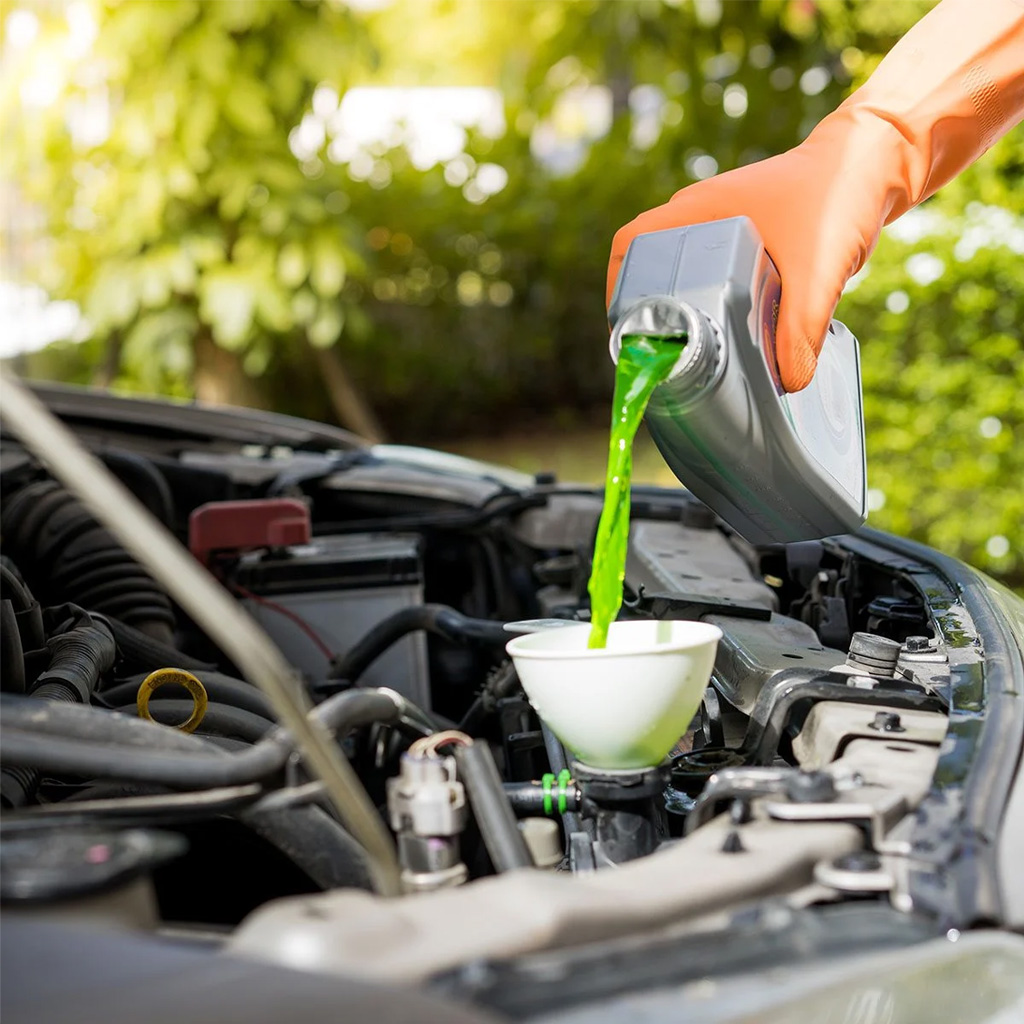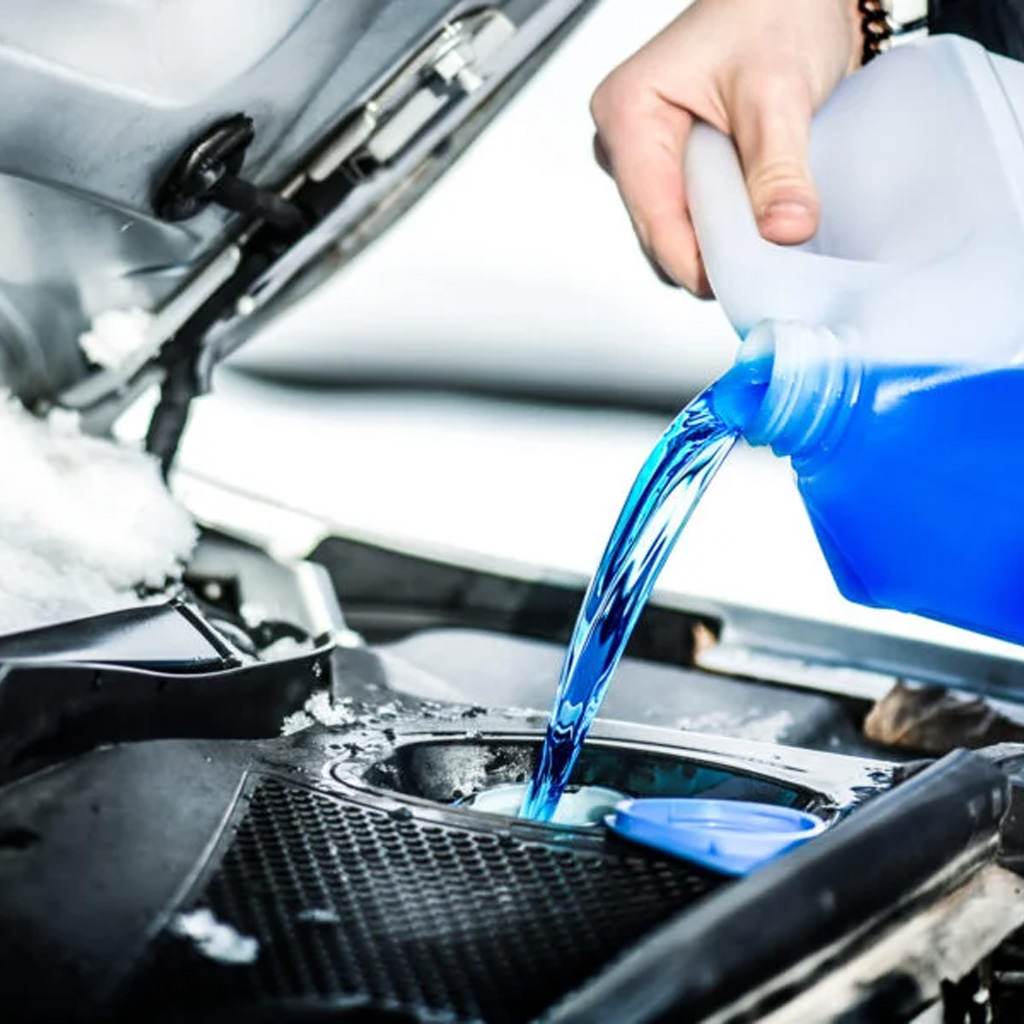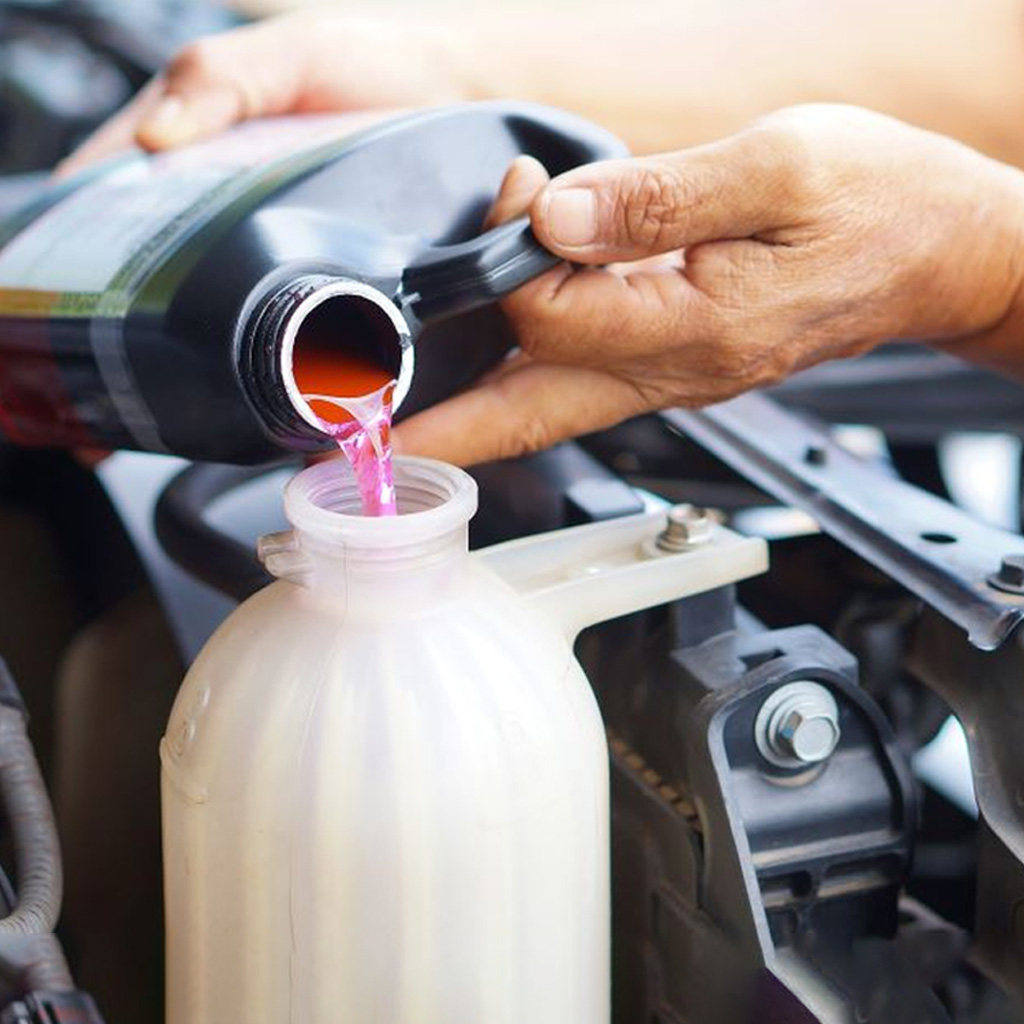Five Things You Need to Know About Car Coolant
Many people have little to no idea about what a car coolant is and what role it plays. However, understanding this crucial component is key to maintaining your vehicle’s efficiency.
Car coolant is a vital fluid in your vehicle's engine that plays a crucial role in maintaining its performance and longevity.
You can avoid a lot of damage later on if you know how cooling systems operate, how to take care of them, and when it is necessary to carry out changes. With that being said, let’s take a look at five essential things you should know about your car's coolant.
What is car coolant, and what is its purpose?
Car coolant, also known as anti-freeze, is an essential liquid in any vehicle. It is a mixture of water and chemicals that assists in maintaining the temperature of the engine.
It is composed of ethylene glycol or propylene glycol. The aforementioned lowers the freezing point so the coolant doesn’t freeze. They also raise the boiling point to prevent overheating.
The cooled coolant passes through the engine and through to the liquid-cooled radiator. It carries heat generated from the engine to prevent the engine from overheating.
Coolant moves through the engine and radiator. It absorbs heat from the engine. This keeps the engine from getting too hot.
After absorbing the heat, the coolant goes to the radiator. The radiator releases the heat into the air. This lets the coolant cool down before it returns to the engine.

Types of Coolant
There are several types of coolant, each designed for specific needs:
●Inorganic Acid Technology (IAT)
IAT coolant is often used in older vehicles. It contains silicates and phosphates. These ingredients protect against corrosion. However, IAT coolants need to be replaced more often. Typically, you should change IAT coolant every two years or 30,000 miles.
●Organic Acid Technology (OAT)
OAT coolant is made for newer vehicles. It offers long-lasting protection against corrosion. OAT coolants generally last longer than IAT coolants. You usually need to replace them every 5 years or 150,000 miles.
●Hybrid Organic Acid Technology (HOAT)
HOAT coolant blends IAT and OAT technologies. It provides a good balance of corrosion protection and durability. HOT coolants are suitable for a variety of modern vehicles.
●Water-Based Coolants
Water-based coolants are less common. They are mostly water with a small amount of antifreeze and corrosion inhibitors. These coolants are used in some systems but are not as widely recommended.

Identifying signs that your coolant needs attention
Prevention is better than cure, and this applies to your coolant. Below are some indications that your coolant may need to be refilled or changed.
●Overheating engine
When the engine temperature gauge is above normal operating temperature, it may be a sign of low coolant levels or below optimal coolant quality. Coolant helps keep the engine cool by absorbing heat.
In case there is little or no coolant or it is not functioning properly, the engine might simply overheat. The damage caused by overheating can be immense, such as the head gasket blowing up. Fixing an overheating engine right away can save you from costly repairs.
●Discolored coolant
Coolanst should be either clear or slightly green in color. Anything that appears darker than that can be considered dirty. A dirty coolant cannot function effectively. This results in poor heat control and engine overheating.
If you have encountered any of these signs, it is better to change your coolant at the earliest.
●Coolant leaks
If there are puddles or drops of coolant found under your car, it is a clear sign that there are leakages. Most of these leakages are caused by hot tub corrosion, a defective radiator, broken hoses, or worn-out water pumps.
Ignoring such leakages can cause a drop in the amount of coolant present in the car, which would eventually lead to overheating. Check for leaks regularly and fix them quickly to keep your engine in good shape.
●Steam from the Engine
If you see steam coming from under the hood, it’s a serious sign that your engine is overheating. This usually happens when there isn’t enough coolant or when there’s a problem with the cooling system, like a bad thermostat.
Steam means the engine is too hot and can be severely damaged if not fixed right away. Stop driving and get help immediately.
●Unusual Engine Noise
Gurgling or bubbling noises from the engine may mean there’s trapped air in the cooling system or a problem with coolant flow. These noises can disrupt the coolant’s ability to keep the engine cool. If you hear these sounds, get your cooling system checked to avoid overheating.

Checking and monitoring coolant levels
Maintaining the correct coolant levels is a crucial part of driving your vehicle. To do this first, check that the engine is completely cool before checking how much coolant is available. Lift the hood and locate the coolant reservoir or radiator cap.
The reservoir will usually have minimum and maximum level indications. Ensure that the level of coolant is within these two indications if marked out.
Using the right type of coolant
If it’s low, add the right type of coolant until it reaches the correct level. Always use the coolant recommended by your vehicle’s manufacturer. Mixing different types of coolant can cause chemical reactions.
This can reduce the coolant’s effectiveness and may damage the engine. Over time, coolant can get dirty and lose its ability to keep the engine cool. Flushing and replacing the coolant is needed to keep the engine at the right temperature and prevent corrosion.
Do this according to your vehicle’s maintenance schedule, usually every 2 to 5 years. Also, regularly check the coolant system for leaks. Pay special attention to hoses, the radiator, and the water pump. Fix any leaks quickly to avoid low coolant levels and engine overheating.
Understanding the role and maintenance of car coolant is essential for keeping your vehicle running smoothly. Regular checks, using the correct type of coolant, and addressing any signs of coolant issues will help you avoid costly repairs.
OTHER NEWS
-
- An Introduction to Autonomous Driving Technology
- By Prodosh Kundu 17 Jun,2024

-
- Technological Evolutions That Have Shaped Modern Trucks
- By Prodosh Kundu 20 May,2024

-
- Saving Money as Well as Environment – Electric Trucks are here to Stay
- By Prodosh Kundu 17 May,2024

-
- Know All About the History of the Big 3 Automakers in the World
- By Prodosh Kundu 20 May,2024

-
- Top Five Classic Vintage Cars of All-Time
- By Prodosh Kundu 17 May,2024

-
- Upcoming Bugatti to Feature Naturally Aspirated V16 PHEV Powertrain Producing 1,800 Horsepower
- By Prodosh Kundu 17 May,2024

-
- From Workhorses to Luxury Rides: The Evolution of Pickup Trucks in the United States
- By Prodosh Kundu 20 May,2024

-
- The Top Five Best-Selling Vehicles in America
- By Prodosh Kundu 20 May,2024

-
- Why the Jeep Grand Cherokee is Perfect for Off-Road Adventures
- By Prodosh Kundu 14 Aug,2024

-
- Maximizing Longevity: Essential Rules for Truck Maintenance
- By Prodosh Kundu 20 May,2024

-
- Vehicle Overview: Subaru Outback
- By Prodosh Kundu 02 Sep,2024

-
- Volkswagen unveils the 2025 Volkswagen ID Buzz Electric Van Lineup in the United States
- By Prodosh Kundu 16 May,2024

 1
1 1
1